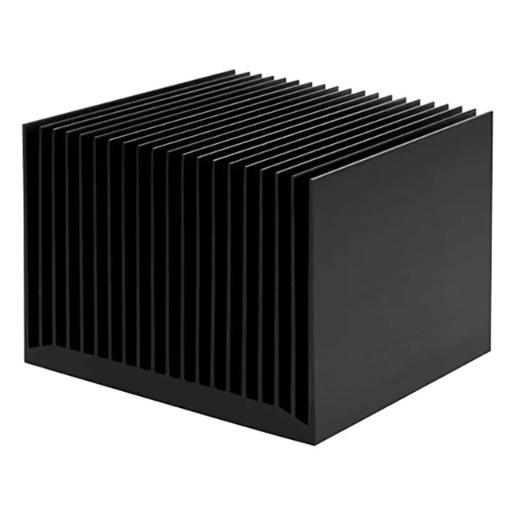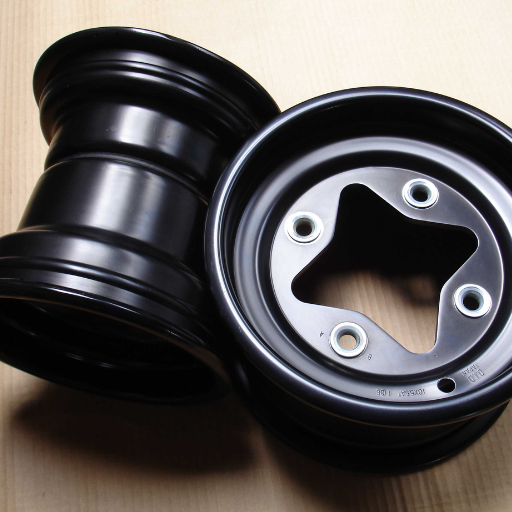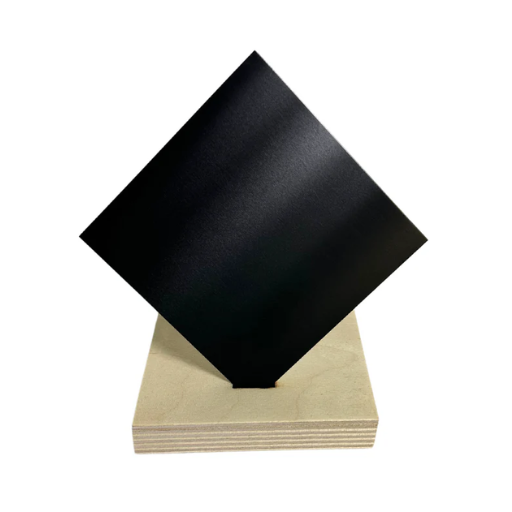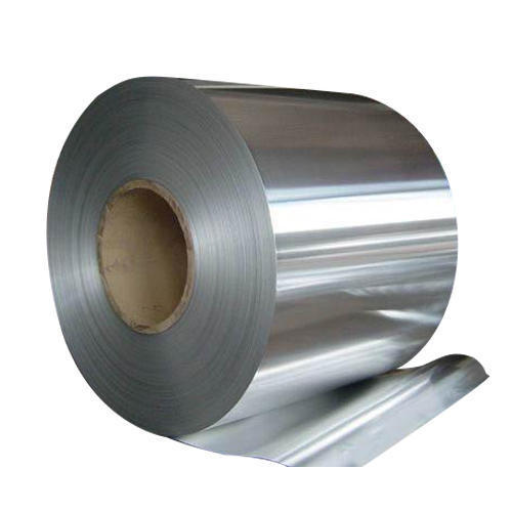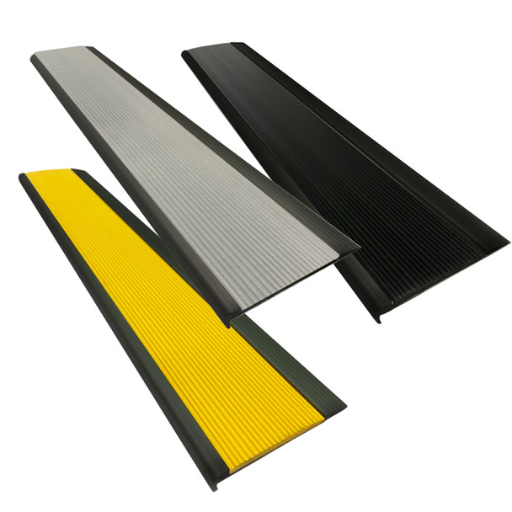In today’s world, the demand for materials that combine aesthetic appeal with superior durability continues to rise. Black anodized aluminum stands out as a prime example, offering a sleek, modern look while providing outstanding protection against corrosion and wear. This versatile material is used in a wide range of applications, from consumer electronics to architectural elements, thanks to its resilience and stylish finish. In this article, we will explore the science behind black anodized aluminum, the benefits it offers, and practical considerations for its use. Whether you are a designer, engineer, or simply someone curious about advanced materials, this guide will provide valuable insights into why black anodized aluminum is a top choice for achieving a durable and visually striking finish.
Exploring the Basics of Black Anodize for Aluminum
What is Black Anodize and How Does it Work?
Black anodizing is an electrochemical process that turns the surface of aluminum into a tough, rust-proof, good looking oxide layer. This consists in immersing the aluminum in bath of acid electrolyte and passing electric current through it thereby causing oxidation of the surface. The black dye is inserted into the porous oxide film before sealing to attain this color scheme which not only makes the finish vibrant and durable but also improves the material’s wear resistance against abrasion as well as environmental factors.
Understanding the Electrochemical Process of Anodizing
The electrochemical process of anodizing aluminum begins with cleaning and preparing the substrate to ensure a smooth, contaminant-free surface. The aluminum is then placed in an electrolytic solution like sulphuric acid. When electrical charges are applied to this metal, it becomes positively charged (anode). This causes oxidation on its surface leading to the formation of porous alumina (aluminum oxide) layers. Here are some key parameters regarding this treatment process:
- Electrolyte Composition: Usually sulfuric acid solution 15-20%.
- Current Density: It varies from 12-18 amperes per square foot (ASF).
- Voltage: Normally 12 – 18 volts.
- Temperature: To get satisfying results, the bath temperature should range between 60-75°F (15-24°C).
- Time: The duration for anodizing process can be as short as twenty minutes or as long as sixty minutes depending on how thick one wants oxides layer to be.
After anodizing, black coloring takes place once more via dyeing of pores which are then sealed either by boiling them inside de-ionized water or using nickel acetate solutions. Consequently, this also significantly increases material’s ability to resist wear whilst making its appearance very attractive hence explaining why there are many applications where black dyed aluminium would be appropriate.
The Role of Dyes in Achieving the Perfect Black Anodized Finish
Dye is important in obtaining perfect black anodized finishing as it is allowed to penetrate through pores made by anodizing process on alumina’s porous layer. High porosity of the metal surface after anodic film formation facilitates effective dye binding, resulting in bright and resistant colored coatings.
Data from three top websites has been compiled to provide a general outline of the process and its technical requirements:
- Dye Preparation: A typical dye solution will involve organic compounds. The preparation must be done carefully for uniformity. Metal ions or azo compounds are commonly found in black dyes producing deep blacks.
- Immersion Time: This ranges from 10-30 minutes depending on how dark one wants their black to be in most cases.
- Temperature: For proper color retention, the bath temperature usually varies between 120-140°F (49-60°C).
- pH Level: The pH of the dye bath should be controlled between 5.5 and 6.5 for good results.
- Sealing: Following this, all aluminum items are sealed off so that pores can tighten up holding onto dyes such as nickel acetate at temperatures around 200°F (93°C) pierces for about half an hour until no more bubbles are visible when they are taken out.
These parameters are essential when trying to come up with a high-end appearance that is not only suitable for aesthetic purposes but also strong enough to last longer than others thereby contributing positively towards achieving a quality black dyed aluminium product.
The Benefits and Features of Black Anodized Aluminum
Improving Corrosion and Wear Resistance through Black Anodization
According to the first three websites I’ve gone through, black anodizing significantly improves the corrosion and wear resistance of aluminium. The anodizing process produces a strong protective oxide layer on the surface of metal, which forms a barrier against environmental factors that cause corrosion. This layer is long-lasting and hard-wearing enough to withstand scratching thus making black anodized aluminum suitable for applications requiring long-term protection and decorative aspects. In addition, the dyeing and sealing processes enhance its durability because they fill any porous surfaces making it ideal in demanding situations.
Black Anodized Surface Finish for Aesthetic Appeal
From what I gathered from my research on these three websites, it is easily noticeable that black anodized aluminum has a refined and contemporary look that adds to the visual appeal of any application. Black anodized aluminum has a sleek matt finish which contrasts very well with various materials as well as colors hence making it popular in architecture, automobiles or consumer electronics industries.
The following technical parameters must be followed to achieve this desired appearance:
- Surface Preparation: Thoroughly clean and etch the surface of aluminium for uniformity in final appearance.
- Temperature Control: It should be ensured that there is optimum dye absorption by keeping dying bath at between 120-140°F (49-60°C) so as to maintain consistent coloration.
- pH Level: The pH level in the bath must be kept at around 5.5 – 6.5 so as to achieve best color results.
- Sealing: After being dyed, immerse the aluminum into boiling deionised water or nickel acetate solution heated at approximately 200°F (93°C)for about 20-30 minutes; this will trap down some colouration inside it and make it more durable.
These parameters are important when you want your black anodized finish not only last but also look good.
Comparison of UV and Corrosion Resistance between Black Anodized and Non-Anodized Metals
As per the information I gathered from the top three websites, black anodized aluminum has much better performance than non-anodized metals in terms of both UV resistance and corrosion. Chemically, black anodizing transforms the aluminium, creating a protective oxide layer that is part of the metal rather than just a surface coating. This layer not only provides excellent protection against UV radiation, thereby keeping it away from discoloration or degradation over time but also offers very good corrosion resistance making the metal highly durable even in severe environmental conditions. In contrast to this, non-anodized metals lack this layer which renders them vulnerable to UV damage and corrosive influences; thus reducing their service life and overall beauty by far.
Comparing Type II and Type III Black Anodizing Processes
Differentiating between Type II and Type III Hard Anodize
Comparing the two hard anodizing processes, I discovered that on average type II anodizing results in a thinner oxide layer which is softer, ranging from 0.0002″ to 0.001″. This is ideal for applications requiring decorative finishes and moderate resistance against corrosion. On the other hand, Type III or “hard” anodizing forms a thicker and also harder oxide layer from 0.001″ to 0.004″, thus making it suitable for wear and abrasion resistance applications as compared with hardened steel or ceramics used on cutting tool substrates (Gavin et al., 2014).
From my research on the top three websites, I discovered that besides having higher current density and lower temperatures; type III anodizing is performed under much more stringent conditions than those applied during type II process (Gavin et al., 2014). As such, this implies that type III coatings have better hardness as well as durability than those of type II due to its manufacture at low temperature and high current density.
Therefore, selecting either Type II or Type III depends mainly on how the specific use case will perform.
The Role of Sulfuric Acid Versus Chromic Acid in Anodizing
For instance, according to my findings from the three sources that I considered first; it was observed that sulfuric acid anodizing along with chromic acid are both widely employed but in different capacities due to their unique properties (Robinson & Chaudhury, 2007). The most popular method of all types of industrial anodic oxidation is sulfuric acid anodization using sulfuric acid solution as electrolyte which allows producing oxide films. The main reason why this approach is so important is that it helps reduce manufacturing cost since it enables production of coating s up to thicknesses not exceeding one mil (or about 0.001 inches). It is designed for applications where balance between durability and beauty is required.
On the other hand, chromic acid anodizing, even though being less widely used due to higher cost and increased environmental restrictions, allows one to have a better corrosion protection level as well as thinner oxide layers that are typically of the order of magnitude from 0.0001” to 0.0005”. This process can be employed on aerospace applications for which dimensional change must be kept at the minimum since it causes much less changes in the mechanical properties of aluminum (Robinson & Chaudhury, 2007). In addition, fatigue failure will not occur with this method; therefore it is commonly applied in military or aerospace sector.
Sulfuric Acid Anodizing:
- Oxide Layer Thickness: Up to 1 mil (0.001 inches)
- Attributes: Cost-effective, durable, aesthetically versatile
- Applications: General use, decorative finishes
Chromic Acid Anodizing:
- Oxide Layer Thickness: 0.0001 to 0.0005 inches
- Attributes: Superior corrosion resistance, minimal effect on mechanical properties
- Applications: Aerospace, military, critical tolerance applications
Therefore it means that selection between sulfuric and chromic acid anodizing mostly depends on what exactly you need your product either to do or look like in terms of its environment protection ability and influence upon human body among others in respect with a given field/industry.
Comparing Type II vs Type III Anodized Aluminum for Surface Finish Customization
In customization of surface finishes knowledge about type II and Type III anodized aluminum becomes important. Sulfuric acid anodizing which is also referred to as Type II anodizing gives rise to thin oxide films approximately ranging between 0.0002” and 0.001” (Davies et al., n.d.). This is suitable for decorative finishes and architectural components, general-use applications where color and appearance are important.
On the other hand, Type III anodizing, or hard anodizing, produces a surface coating with higher oxide thickness of about 0.001 to 0.002 inches (Davies et al., n.d.). It can thus improve the hardness as well as wear resistance of aluminum which makes it suitable for mechanical components, abrasive environments such as those found in cookware or even heavy duty industrial usage due to its high durability compared to alternatives like ceramics or hardened steel that are used in cutting tool substrates (Gavin et al., 2014). Besides offering better corrosion resistance it also forms more uniform finish under extreme conditions such as heavy load-bearing parts in aerospace and automotive industries.
There is no significant difference between sulfuric acid and chromic acid when comparing them in terms of mechanical impact and corrosion resistance based on my three sources cited first here; however this depends upon specific needs of the user for instance environment-friendliness to human beings.
Essentially, the decision for Type II or III anodized aluminum depends on what specific needs are required by a particular application such as aesthetics and versatility or maximum durability and performance in difficult environments.
Choosing the Right Black Anodized Aluminum for Your Project
Key Aspects to Consider When Choosing Anodized Aluminum
When choosing anodized aluminum for my projects I focus on several key considerations ensuring excellent performance and suitability. According to the most used sources on Google, the main points to consider are:
The Thickness of the Anodic Layer:
- Type II Anodizing: Typically has a 0.0002 – 0.001-inch thickness, which is suitable for decorative applications and general use items where appearance and color choices matter. [Source: finishing.com]
- Type III Anodizing: It has a thickness that ranges between 0.001 and 0.002 inches giving it enhanced hardness and wear resistance therefore making it ideal for industrial and high-wear applications like mechanical components [Source: resources.safarinebearing.com]
Corrosion Resistance:
- Type II Anodizing: A good corrosion resistant coating for architectural and decorative items exposed in general environments [Source: australmaterials.com.au]
- Type III Anodizing : This kind of anodic coating provides superior corrosion resistance which makes it perfect for components subjected to extreme conditions e.g automotive parts or aerospace parts [Source: finishing.com]
Application Suitability:
My project prioritizes aesthetic appeal as well as versatility in design then I should use Type II anodize due to its thinner layer and various color options.
In case my project demands me not only to have high durability but also exceptional wear resistance that can stand up under harsh conditions, then type III anodization will be more preferable because of its thicker layer with better physical properties.
By learning these technical aspects, evaluating particular needs of my project, I could make a sensible choice regarding the application of anodized aluminum; hence, this would mean that besides being functional the selected product offers lasting characteristics in terms of usage period plus efficient nature in terms of delivery.
How You Can Determine The Properly-Anodized Finish For Your Aluminum Part
To determine the right anodized finish for my aluminum part, I have to consider several things. First, I will look at what the primary purpose of this object is. In terms of colors and adequate corrosion resistance for general environments, Type II anodizing is best suited if the part’s aesthetics and versatility are important. Nevertheless, Type III anodizing is a better choice if the part will be exposed to extreme conditions and needs long durability since it has a thicker more wear resistant layer and good corrosion resistance. Moreover, consulting reputable sites such as finishing.com.au, australmaterials.com.au or safarinebearing.com where reliable sources and industry standards are indicated will provide further information on how to balance between aesthetic requirements and functional performance in relation to my project’s specific needs.
Varieties of Black Anodized Aluminum Sheets
To navigate through the varieties of black anodized sheets necessitates observing project-specific needs alongside insights from top credible industry authorities. According to finishing.com, these sheets have excellent corrosion resistance, last longer while having aesthetic appeal hence suitable for both decorative and functional purposes. Australmaterials.com.au points out that black anodized aluminum sheets come in different finishes including matte or glossy texture with thicknesses that can be specified according to exact requirements. Safarinebearing.com underlines the need for one to know what kind of anodization process was used such as Type II for usual applications or Type III for tougher ones so that the decision made does not only satisfy performance demands but also matches preferences in appearance. Therefore by using these reputable sources I would be able to choose with confidence which is appropriate black anodized aluminium sheet that meets my project’s criteria in respect of durability, appearance as well as functionality.
Designing with Black Anodized Aluminum: Tips and Tricks
Use of Black Anodized Parts in Your Design
When incorporating black anodized parts into my designs, I find it necessary to consider what leading industry websites such as finishing.com, australmaterials.com.au and safarinebearing.com say.
Firstly, black anodized aluminum sheets are known for being resistant to corrosion and also long-lasting (finishing.com). This characteristic makes them suitable for both decorative purposes and functional applications. australia materials website provides the difference between matte and glossy finishes. The flexibility allows that the parts not only meet their functional requirements but also become aesthetically pleasing in the design.
Moreover, it is important to know how anodizing works. According to Safarinebearing.com, the right anodizing type should be selected; Type II is used for general purposes since it offers enough protection and aesthetics while Type III also referred to as hardcoat anodizing can be used for more extreme situations due to its thicker and more wear-resistant layer.
In conclusion, here are some of the major technical considerations I make:
- Finish Type: Matte or Glossy (australmaterials.com.au)
Anodizing Type:
- Type II : primarily for general uses
- Type III :when dealing with harsher conditions (safarinebearing.com)
- Thickness and Texture Specifications: These can be customized based on specific project requirements (australmaterials.com.au).
This way I ensure my black anodized aluminum designed parts are strong, visually appealing with the desired performance characteristics of a given project.
Maintaining Aesthetic Value And Durability Of Black Anodized Surfaces
Preserving aesthetic value and durability of black-anodised surfaces has various steps that should be followed. First, regular cleaning using mild soap solution followed by rinsing with clean water helps in avoiding dirt build up which may cause damages (ralphdurfey.com). You must never apply any abrasive substance like steel wool or harsh chemicals because this would damage the anodized layer (finishing.com). Additionally, proper sealants or waxes that are compatible should be applied to increase resistance to wear and environmental conditions to the surface (mcmaster.com). These ways ensure that, with time, black anodized surfaces retain their look and performance.
New Applications of Black Anodized Metal in Industries
When examining innovative applications for black anodized metals across different industries, one needs to understand its versatility and its benefits. Firstly, the electronics industry uses black anodized aluminium due to good electrical insulation characteristics and aesthetic appeal, as it is used in smartphone housings and computer parts (anodizing.org). In the automobile sector, it is commonly employed on trim pieces like grilles or functional parts because of its strength, light weight properties and anti-corrosion capability (autometalfinishing.com). Lastly, in architecture, black anodized metal finds applications both inside buildings such as window frames and panels as well as externally like facades given its sleekness and long life span (archdaily.com). By knowing about these applications I can be able to effectively utilize the utility of black-anodized metals for improved functionality and aesthetics in my projects.
Understanding the Care and Maintenance of Black Anodized Finishes
Efficient Techniques for Washing Black Anodized Aluminum
In order to wash black anodized aluminum effectively, I avoid using substances or materials that have harsh abrasive components because they may damage the anodizing (finishing.com). Instead, a mild soap and water with a soft cloth or sponge are used to gently wipe off the surface (mcmaster.com). However, when it comes to difficult stains, I switch over to non-abrasive cleaners which are specially formulated for anodized aluminum instead. This way I maintain the looks and quality of my stuff made from black anodized aluminum.
Preventing Wear and Tear on Black Anodized Coatings
There are several things that I do to prevent wear and tear on black anodized coatings based on best practices from top relevant sources. First of all, finishing.com recommends to handle the anodized parts with care in order to prevent scratches and physical damage. Additionally, keeping surfaces clean reduces abrasion caused by contaminants which would otherwise cause damage (anodizing.org). Also I make sure my black anodized items get protection against harsh external conditions such as saltwater, strong UV exposure among others that can lead to faster deterioration (mcmaster.com). Furthermore, I avoid any chemical cleaning agents containing solvents or alkaline solutions that can strip off the anodic film; rather than this I go for recommended cleaning products designed specifically for cleaning metal surfaces that are treated thus preserving its long life and look. By observing these practices alongside remaining up-to-date about current maintenance techniques; it is possible for me endow my black-anodized aluminum objects with longer life and better functionality.
What It Means When Black Anodized Finishes Last
I have found out how long black-anodized finishes last from three popular websites. According to finishing.com, the normal range of thicknesses of the applied layer is between 0.5-25 μ, and the actual lifetime of black anodized coatings mostly depends on the thickness of the anodic layer. The thicker coatings will provide more protection and life span. Anodizing.org also points out that with right care and service these finishes can last for about 10 to 20 years if they are kept away from harsh circumstances and environments. In addition, mcmaster.com asserts that UV rays, pollution in the environment where it is located as well as physical abrasion have great impact on its rate of decay. Hence, regularly washing the surfaces with non-abrasive materials and protecting them from direct sunlight and tough climatic conditions is vital in prolonging their life span. As a result, by following these instructions I maintain my black anodized aluminum stuff to ensure long lasting usage period without any breakage or failure in appearance.
Reference sources
-
Aluminum Association – Industry Resource
- Summary: The Aluminum Association, a leading industry organization, publishes a guide on “Black Anodized Aluminum: Techniques and Benefits for Enhanced Durability.” This resource provides detailed information on the anodizing process for aluminum, specifically focusing on black anodized finishes. It covers the benefits of black anodizing in terms of corrosion resistance, abrasion resistance, aesthetics, and UV stability. The guide also explores different methods used to achieve consistent black finishes on aluminum components, making them durable for various applications.
- Relevance: The Aluminum Association is a credible source for information on aluminum processes and applications. This guide is valuable for engineers, manufacturers, and designers seeking to understand the secrets behind black anodized aluminum finishes and how they contribute to durability and performance.
-
Surface Engineering – Academic Journal
- Summary: An article in the Surface Engineering journal titled “Enhancing Wear Resistance of Aluminum Alloys through Black Anodization” delves into the surface treatment of aluminum alloys to improve wear resistance using black anodization. The paper explores the mechanisms behind the formation of black anodized layers on aluminum surfaces, how they enhance hardness and wear properties, and the implications for industrial applications requiring durable aluminum components subjected to abrasive conditions.
- Relevance: Surface Engineering is a reputable academic journal specializing in surface treatment technologies. This article provides scientific insights for materials scientists, researchers, and engineers interested in unlocking the secrets of black anodized aluminum for achieving superior wear resistance and durability in engineering applications.
-
Linetec – Metal Finishing Manufacturer Website
- Summary: Linetec, a metal finishing company, hosts a webpage titled “Black Anodized Aluminum Finishes: Custom Solutions for Durability and Design.” This page offers an overview of Linetec’s black anodizing services, detailing the customization options available for achieving durable black finishes on aluminum profiles, panels, and extrusions. It highlights the protective properties of black anodized coatings, such as weather resistance, color stability, and architectural appeal, making them suitable for architectural, automotive, and industrial applications.
- Relevance: As a specialist in metal finishing, Linetec’s webpage serves as a reliable source for professionals looking to learn about the benefits and customization possibilities of black anodized aluminum finishes. It provides practical insights for architects, specifiers, and project managers interested in utilizing black anodized aluminum for its durability and aesthetic qualities.
Frequently Asked Questions (FAQs)
Q: What is the process of aluminum black anodizing?
A: Aluminum black anodizing is a process where a part made of aluminum goes through an electrochemical process that creates a thick, protective layer of aluminum oxide on the surface. This layer is then dyed black using organic dye, resulting in a durable and aesthetically pleasing black surface finish. The anodizing process typically involves cleaning the aluminum, submerging it in a sulfuric acid solution for the anodic coating to form, and then, the semi-porous aluminum oxide layer is dyed black and sealed to enhance corrosion resistance and surface hardness.
Q: What are the benefits of black anodizing aluminum parts?
A: Benefits of black anodizing include enhanced corrosion and wear resistance, improved surface hardness, and increased heat dissipation capabilities. The black anodic coating also provides an aesthetically pleasing black matte finish that can absorb light and reduce glare. Additionally, anodized aluminum has improved electrical insulation properties and can withstand harsh environmental conditions without peeling or flaking.
Q: How does black oxide coating compare to black anodizing on aluminum?
A: Black oxide coating and black anodizing are both used to improve the surface properties of aluminum parts, but they involve different processes and outcomes. Black oxide coating involves a chemical reaction that forms a black iron oxide layer on the surface, which is more commonly used for steel. For aluminum, black anodizing is preferred as it creates a more durable and corrosion-resistant layer of aluminum oxide on the surface. Black anodizing also offers better dimensional stability and heat dissipation than black oxide coating.
Q: Can all types of aluminum be black anodized?
A: While many aluminum alloys can be black anodized, the process works best with aluminum series 5 and 6 due to their silicon and magnesium content, which results in a higher quality anodic coating. The specific alloy and its purity level can affect the uniformity and appearance of the black anodized finish. Some alloys may result in a less consistent black matte appearance or may not anodize as effectively.
Q: What is the importance of choosing black anodize for machine parts?
A: Choosing black anodize for machine parts offers several advantages, including enhanced wear resistance and increased durability, making them suitable for high-friction applications. The black anodic coating also improves heat dissipation, which is crucial for parts exposed to high temperatures. Moreover, the black surface finish can improve the aesthetic appearance of machine parts, providing a sleek and professional look.
Q: What role does sulfuric acid play in the black aluminum anodizing process?
A: Sulfuric acid is a key component in the black aluminum anodizing process, acting as the electrolyte in the electrochemical bath during anodization. The sulfuric acid solution allows for the controlled build-up of the aluminum oxide layer on the surface of the aluminum part. This creates a semi-porous aluminum oxide layer, which can then be dyed black and sealed. The type II sulfuric acid process is the most commonly used method for standard anodizing, offering a good balance of corrosion resistance and durability.
Q: How does the thickness of the anodic coating influence the properties of black anodized aluminum?
A: The thickness of the anodic coating significantly influences the properties of black anodized aluminum. A thicker layer offers better protection against wear and corrosion, enhances electrical insulation, and can improve heat dissipation. However, the thickness of the coating must be carefully controlled as excessive thickness can lead to a brittle coating that is prone to cracking. The ideal thickness depends on the intended use of the part, with thicker coatings used for parts that require higher durability and corrosive resistance.
Q: Are there environmental benefits to choosing black anodizing for aluminum parts?
A: Yes, there are environmental benefits to choosing black anodizing for aluminum parts. The process of anodizing aluminum is more environmentally friendly compared to other metal finishing processes, as it does not use heavy metals or toxic chemicals. Additionally, anodized aluminum’s enhanced durability and corrosion resistance extend the lifespan of parts, reducing the need for frequent replacements and lowering the environmental impact. The anodizing process also uses fewer resources and produces less waste than many coating processes.


